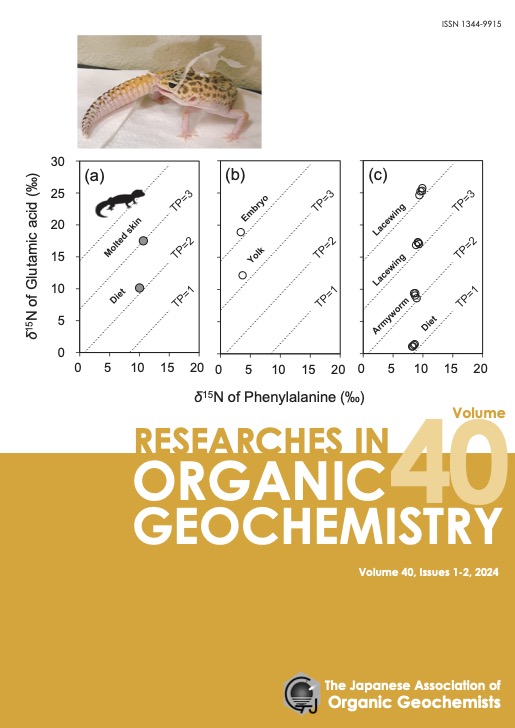Stable isotope analysis of amino acids has been employed as a powerful tool for estimating the trophic position of organisms and for identifying the resource utilization of them in food webs. This tool is based on empirical knowledge of the trophic discrimination of nitrogen and carbon isotopes (i.e., 15 N/ 14 N and 13 C/ 12 C) associated with the degradation and biosynthesis of amino acids in consumer species and based on the assumption that amino acids are major fuels for the life energy of organisms. However, because many organisms have used not only amino acids but also carbohydrates (e.g., sugar) and lipids (e.g., triacylglycerols) as their energy sources, the magnitude of trophic discrimination of amino acids potentially varies when organisms utilize the other energy sources together with amino acids. In the present study, we conducted controlled feeding experiments with the ant Formica japonica under three conditions: colony I, ants feed on frozen crickets; colony II, ants feed on frozen crickets and sugar; and colony III, ants feed on fried crickets and sugar. The nitrogen and carbon isotope ratios of larvae and pupae collected from these colonies reveal that (1) the effect of sugar utilization is negligible for a source-essential amino acid (i.e., phenylalanine), trophic-essential amino acids (i.e., valine, isoleucine, and leucine), and a trophic-nonessential amino acid (i.e., glutamic acid) but large for the other trophic-nonessential amino acids (i.e., alanine, glycine, and proline), and that (2) the effect of lipid utilization is negligible for a source-essential amino acid (i.e., phenylalanine) and a trophic-essential amino acid (isoleucine) but considerably large for the other trophic-essential and trophic-nonessential amino acids (i.e., valine, leucine, alanine, glycine, and proline). Based on these results, we conclude that the trophic isotopic discrimination of amino acids varies with the utilization of carbohydrates and lipids. Moreover, we predict that this variation in the isotope ratios found in the present study will be useful for better understanding how the trophic isotopic discrimination of amino acids is changed in organisms and for evaluating the carbohydrate and lipid utilization of organisms in wild food webs.
View full abstract
